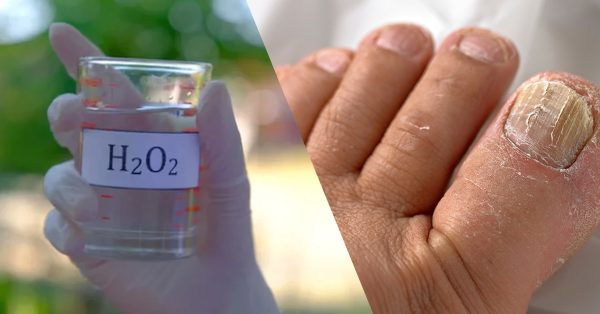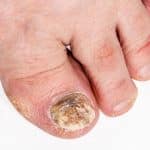Curious if hydrogen peroxide can kill toenail fungus? Wonder no more! This powerful solution offers a contrasting approach to traditional treatments, promising efficiency and convenience.
By exploring its potential benefits and application methods, you can discover a simple yet effective remedy for this common ailment. Stay tuned to uncover how hydrogen peroxide may just be the game-changer you’ve been searching for in the battle against stubborn toenail fungus.
Quick Summary
Yes, hydrogen peroxide can kill toenail fungus by disinfecting the area, but it’s more effective when used as part of a broader treatment plan.
Understanding Toenail Fungus
Causes
Toenail fungus thrives in warm, moist environments, making poor hygiene a significant factor in its development. The fungus can also spread from person to person through direct contact or sharing contaminated items. Risk factors for toenail fungus include wearing tight shoes, walking barefoot in public areas like pools, and having a weakened immune system.
Symptoms
Typical symptoms of toenail fungus include thickened nails, brittle texture, and yellow or white discoloration. If left untreated, the infection can progress, leading to painful nails, foul odor, and even nail detachment. Advanced toenail fungus may cause severe discomfort while walking or standing.
Prevention Tips
Maintaining good foot hygiene is crucial to prevent toenail fungus. Regularly wash and dry your feet thoroughly, especially between the toes. To avoid recurrence, wear clean socks and shoes that allow air circulation. Trim your nails straight across and disinfect nail clippers after use to prevent fungal infections.
Hydrogen Peroxide Basics
Properties
Hydrogen peroxide, a powerful oxidizing agent, is known for its antifungal properties. It effectively eliminates fungi by disrupting their cell walls. When exposed to fungi, hydrogen peroxide releases oxygen, which leads to the destruction of fungal structures.
How It Works
Hydrogen peroxide combats toenail fungus through its oxidative action, breaking down fungal cells and inhibiting their growth. By penetrating the infected nail bed, it targets and eradicates fungal spores effectively. Studies have shown the efficacy of hydrogen peroxide in treating toenail fungus.
Safety Measures
To ensure safe usage, always dilute hydrogen peroxide before applying it to the skin or nails. Potential side effects may include skin irritation or burning sensations. When handling hydrogen peroxide solution, wear protective gloves and avoid contact with eyes or mucous membranes.
Effectiveness Against Fungus
Scientific Evidence
Hydrogen peroxide’s antifungal properties have been validated in scientific studies, showing promising results against toenail fungus. Clinical trials have demonstrated the efficacy of hydrogen peroxide in combating various fungal infections. Reputable sources consistently confirm hydrogen peroxide’s effectiveness in treating fungal infections.
Mechanism of Action
Hydrogen peroxide effectively disrupts fungal cell membranes, hindering their growth and spread. Through an oxidative stress mechanism, hydrogen peroxide targets the structural integrity of fungi, impeding their ability to thrive. Specific enzymes within fungal cells are targeted by hydrogen peroxide, further weakening the fungal infection.
✅ Doctor: If you Have Nail Fungus, Do This Immediately (Watch This)
Natural Treatments Overview
Hydrogen Peroxide
Hydrogen peroxide is a common household antiseptic known for its antifungal properties. When treating toenail fungus, it is crucial to use the appropriate concentration levels to ensure effectiveness. Apart from combating fungal infections, hydrogen peroxide is widely utilized in various medical settings.
Apple Cider Vinegar
Apple cider vinegar boasts antifungal properties, making it a valuable addition to toenail fungus treatment. When used alongside hydrogen peroxide, apple cider vinegar can enhance the overall effectiveness of the treatment. To incorporate apple cider vinegar into your regimen, consider soaking the affected area in a mixture of water and apple cider vinegar.
Healthy Diet
A balanced diet plays a vital role in supporting toenail fungus treatment by promoting nail health and boosting immune function. Including foods rich in essential nutrients like vitamins, minerals, and antioxidants can aid in combating fungal infections effectively. Incorporating foods such as leafy greens, nuts, seeds, and probiotics can significantly contribute to the healing process.
Step-by-Step Guide
Preparing the Solution
To prepare a hydrogen peroxide solution, mix equal parts of 3% hydrogen peroxide and water. This creates a safe and effective dilution ratio for application. Store the solution in a dark bottle to prevent light exposure.
Application Process
When applying hydrogen peroxide to toenail fungus, soak the infected nails in the solution for 10-15 minutes daily. Consistent application is crucial for successful treatment outcomes. Avoid using high concentrations that can cause skin irritation.
Duration and Frequency
For optimal results, continue applying hydrogen peroxide for 2-4 weeks. Apply the solution once daily to ensure effectiveness. Factors like severity of infection and individual response may impact treatment duration and frequency.
✅ Do You Have Toe Nail Fungus? Try This Tonight (Watch This)
Potential Risks and Precautions
Skin Irritation
Hydrogen peroxide can cause skin irritation if not used properly. To prevent this, dilute the solution before application. If irritation occurs, rinse the area with water immediately.
Using hydrogen peroxide in excessive amounts can lead to skin sensitivity. It is crucial to apply a small quantity initially and observe for any adverse reactions. In case of irritation, discontinue use and consult a healthcare professional.
In managing skin irritation, apply a soothing cream or aloe vera gel to calm the skin. Avoid further exposure to hydrogen peroxide until the skin heals completely.
Proper Usage
Following the correct usage instructions for hydrogen peroxide is essential to avoid risks. Use a concentration of 3% for toenail fungus treatment and dilute it with water if necessary.
The recommended amount of hydrogen peroxide for toenail fungus treatment is a few drops applied directly to the affected nail. Gently massage the solution into the nail bed for better penetration.
For optimal results, apply hydrogen peroxide using a clean cotton swab or ball, ensuring thorough coverage of the infected area.
When to See a Doctor
Seek medical advice if you experience severe symptoms like increased pain, redness, or pus formation around the toenail. Self-treatment with hydrogen peroxide is not advisable in such cases.
If toenail fungus persists despite using hydrogen peroxide or if there is no improvement after several weeks, consult a healthcare provider for advanced treatment options.
Summary
You now have a comprehensive understanding of toenail fungus, hydrogen peroxide, its effectiveness against fungus, natural treatments, a step-by-step guide, benefits, potential risks, and complementary treatments. Armed with this knowledge, you can confidently explore using hydrogen peroxide as a potential remedy for toenail fungus.
Remember to proceed cautiously, considering the risks and consulting with a healthcare professional if needed. Incorporating good foot hygiene practices and being consistent in your treatment approach can enhance the effectiveness of hydrogen peroxide in combating toenail fungus. Take charge of your foot health and embark on a journey towards healthier and happier feet.
Frequently Asked Questions
Can hydrogen peroxide effectively kill toenail fungus?
Hydrogen peroxide can help in treating toenail fungus due to its antifungal properties. However, its effectiveness may vary for individuals. It’s best used as part of a comprehensive treatment plan recommended by a healthcare professional.
Is hydrogen peroxide safe to use on toenail fungus?
When used properly and in appropriate concentrations, hydrogen peroxide is generally safe for treating toenail fungus. However, it’s essential to follow instructions carefully to avoid potential side effects like skin irritation.
How should I apply hydrogen peroxide to treat toenail fungus?
To use hydrogen peroxide for toenail fungus, dilute it with water in a 1:1 ratio and apply the solution using a clean cotton ball directly on the affected nails. Let it sit for a few minutes before rinsing off thoroughly.
Are there any natural alternatives to hydrogen peroxide for toenail fungus treatment?
Yes, several natural remedies like tea tree oil, coconut oil, or apple cider vinegar are popular alternatives for treating toenail fungus. These options may also have antifungal properties that can help combat the infection effectively.
Should I consult a healthcare professional before using hydrogen peroxide for toenail fungus?
It’s highly recommended to consult with a healthcare provider before starting any treatment for toenail fungus, including hydrogen peroxide. They can provide guidance tailored to your specific condition and ensure safe and effective management of the infection.



